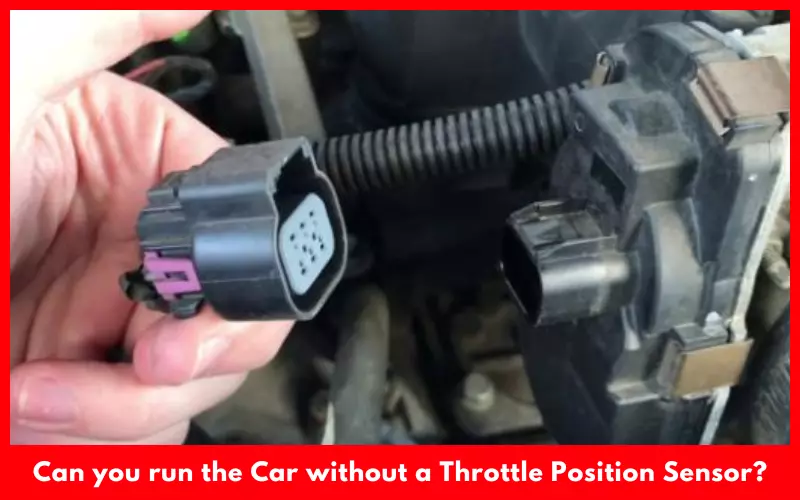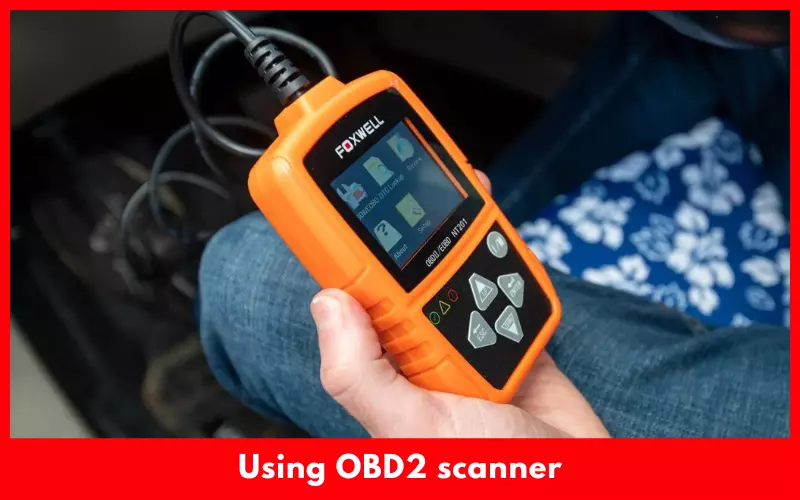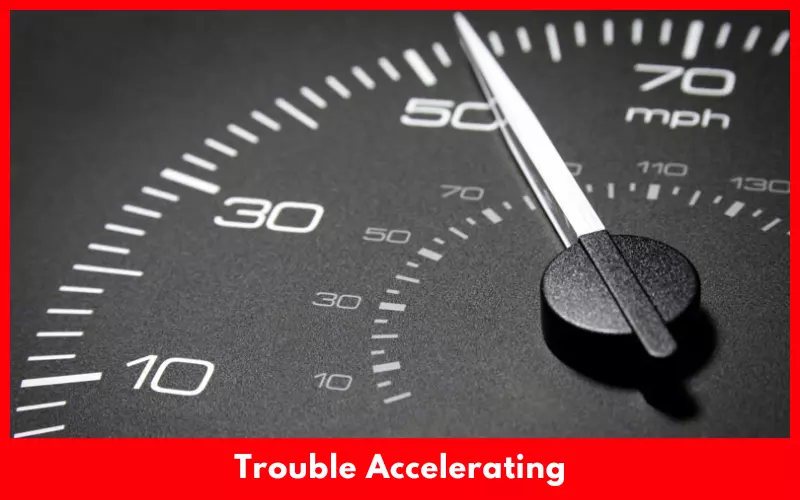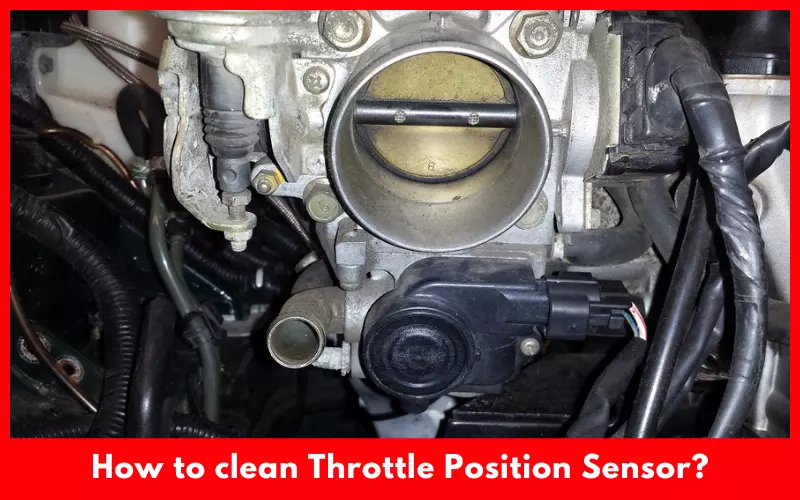Many car owners believe that disconnecting the throttle position sensor helps a car to accelerate better. However, what happens if you disconnect throttle position sensor? If you unplug throttle position sensor then you car engine control module (ECM) won’t able to get proper data signal.
Without throttle position sensor, the ECM won’t be able to understand whether to activate acceleration or stop it. Hence intake manifold won’t get enough air and it can cause car engine stalling, rough idling and accelerating problems.
You can clean, reset or replace throttle position sensor if notice any symptom of malfunction, but should never disconnect or unplug.
Article Summary
- What Happens If You Disconnect Throttle Position Sensor?
- What Happens When You Unplug Throttle Position Sensor?
- Can You Drive A Car Without Throttle Position Sensor?
- How To Fix A Bad Throttle Position Sensor
- How To Reset A Throttle Position Sensor
- Symptoms of A Bad Throttle Positioning Sensor
- Can You Clean A Throttle Position Sensor?
- How To Clean Throttle Position Sensor?
- FAQs
- Final Words
What Happens If You Disconnect Throttle Position Sensor?
Throttle Position Sensor is one of the most vital sensors in the engine. If you disconnect throttle position sensor, the car computer won’t know when you open the throttle or push down on the gas.
However, the effect of disconnecting throttle position sensor varies depending on the specific make, model and year of the car and the type of fuel system and engine.
On some cars, disconnecting throttle position sensor can causes burp if it’s running. It can also make it difficult to start the vehicle. However, it may seem normal for the car to idle until you refill the gas. You may also notice increased airflow on some vehicles and may need to drive with TPS and CEL codes.
What Happens When You Unplug Throttle Position Sensor?
You must have to know possible problems before unplugging throttle position sensor. In some cars, you might not be able to hit the acceleration pedal.
Throttle position sensor is essential for your car computer to know your foot position and what you desire to do.
- After unplugging throttle position sensor limp mode will activate.
- Your car performance and engine power will be reduced.
- You will also face engine stalling and rough idling.
- Disconnecting TPS can also trigger the check engine light and affect the accuracy of the engine management systems and sensors.
- Your car engine may also function poorly with other sensors or stop working.
Hence you shouldn’t unplug or disconnect throttle position sensor without consulting with an expert auto mechanic.
Can You Drive A Car Without Throttle Position Sensor?
You can start the car after disconnecting throttle position sensor as it isn’t a part of the engine. However, you won’t be able to drive the car efficiently without a throttle position sensor. Your car ECM won’t get sufficient information to perform its job.
Hence, the car ECU allows the air to enter into the intake manifold based on guess which can cause inconsistent car performance.

Car engine may also become inefficient and consume extra fuel due to unreliable TPS monitoring. So you might not be able to pass a certain speed level. It is also quite dangerous to run a vehicle without TPS as the gas pedal may cause high speed or no speed even after putting the foot on it.
The car can’t also maintain stable engine speed while idling due to a lack of constant fuel delivery. So it isn’t wise to drive a vehicle without a faulty TPS.
How To Fix A Bad Throttle Position Sensor
Fixing throttle position sensor is very difficult to repair as it’s a sealed unit and tricky to get into its internals. So the easiest way to fix a throttle position sensor is to replace the unit. However, before installing a new throttle position sensor, you must check its compatibility.
To do so, check the resistance changes slowly without spikes through the whole travel range. You can also try to reset the TPS to restore its functionality.

How To Reset A Throttle Position Sensor
The process of resetting the TPS varies depending on the particular vehicle and your car dealer should provide you with the exact process. On some car, you may need to gradually press and lease the accelerator pedal a few times.

You may also require disconnecting the battery or using a diagnostic tool to reset the TPS on some car models. Before applying these resetting processes, make sure your car is mechanically calibrated:
1. Using OBD2 Scanner
Use a compatible OBD2 scanner tool to easily reset your modern car’s TPS and calibrates it. To do this, connect the scanner to your car, run the device, and clear the error codes when it shows on the device’s display.

2. Pushing Accelerator
Put the key into the ignition switch and leave it in the ON position keeping the engine off. For a vehicle with a keyless start system, push the button and leave it quickly so it doesn’t activate the engine.

Hold the accelerator pedal for around 15 to 20 seconds, release it gradually, and turn off the vehicle. Then start the engine and drive the vehicle for a while to check the result.
3. Removing Fuse
The car’s sensor runs through a fuse. So you can manually reset the TPS by removing the sensor. Check your owner’s manual to find the exact car fuse for the TPS from the fuse box. Remove the fuse and wait around 10 minutes before replacing it. It should reset throttle position sensor.

4. Driving the Vehicle
Driving the vehicle at maximum speed and reducing speed slowly is also an effective way to reset the TPS. However, you should maintain a consistent speed of over 40 mph while driving on the highway. Then gradually accelerate ad decelerate maintaining a few minutes between every season.

5. Disconnecting Battery
Remove the negative wire from your car battery and leave it for around 5 minutes. Then reconnect the cable. This’ll reset your car’s all electronic including TPS, stereo preset, and clock.

Symptoms of A Bad Throttle Positioning Sensor
Throttle position sensor is usually a potentiometer-type sensor that has a wiper and contact. These parts can wear out, get dirty and stop working. So you can use an ohmmeter to test the condition of the TPS.

To do so, rotate the throttle plate and see the values on the ohmmeter. If the device shows zero value, the TPS is bad. Below are some other signs of faulty TPS:
Lack of Power
A faulty TPS will prevent the engine from getting the essential fuel or may deliver excessive fuel. So after putting the foot down, the TPS may start screaming out for fuel or move forward even when you don’t desire to speed up.
Trouble Accelerating
If the throttle position sensor gets damaged, the car won’t start or pass a certain speed but will accelerate. So you may experience the vehicle fizzling out after 1st or 2nd gear and won’t go faster.

Uneven Idle
If the TPS starts malfunctioning, your vehicle wont be able to maintain a steady speed. A consistent amount of fuel delivery is essential to ensure steady idle.
Dirt Buildup
Your car’s TPS can cause carbon buildup, particularly after disconnecting it. It can further cause reduced fuel efficiency and impact the emission control system. Carbon can also build up inside the TPS if the ECU runs in the open mode as it boosts fuel consumption.
Check Engine Light
Like other problems, your car will trigger a check engine light when accelerating if detect any problem with the TPS.

Can You Clean A Throttle Position Sensor?
The TPS may become dirty or polluted with debris and start malfunctioning. The consequences of faulty TPS like stalling, rough idling, poor acceleration, or reduced fuel efficiency can be solved by cleaning this sensor. However, you must clean the TPS properly to get an effective result. You may need to clean the TPS every 50,000 miles to maintain its optimum functionality.
How To Clean Throttle Position Sensor?
To clean the TPS, you’ll need a Phillips screwdriver, a new gasket, electronic cleaner spray/ carburetor fluid, a clean cloth, and a flathead screwdriver. Before cleaning the throttle body, disconnect the battery. It’ll help avoid electrical shock.

Then remove the throttle body from the car. Clean light sludge from it using cloth and fluid. If there is heavy sludge, clean it in a solvent and let it dry.
While cleaning, don’t try to clean the sensor as it can damage the wire or contaminate the sensor. To prevent any damage, preserve the TPS in a safe place while cleaning the throttle body and reconnect it after completing the finishing job. Once done, re-attach the throttle body, and reconnect all the electric connectors and battery.
FAQs
Should You Drive Without A Throttle Body?
Though your car’s engine will start without PTS, you won’t be able to control the vehicle without this sensor. So running a vehicle without PTS will be highly dangerous. Hence, you shouldn’t drive without a throttle body.
What Happens When Throttle Body Stops Working?
If your car’s throttle body stop working, your car’s intake manifold will get less or more air. It can result in a malfunction of accelerating and a lack of power in the engine.
How Much Does It Cost To Replace A Throttle Position Sensor?
The cost of changing the TPS usually varies depending on the make and model of the vehicle, the underlying problem, and the auto repair shop. On average, replacing the TPS usually cost around $75 to $105 and the labor cost may range between $110 and $200.
Final Words
You will experience plenty of consequences if you disconnect throttle position sensor from your car. So if you experience any problem with the TPS, try to clean, reset or replace the sensor to increase the car’s performance.
Still, if you aren’t satisfied, take your car to service center for deep diagnosing to boost engine performance. But don’t unplug or disconnect throttle position sensor as it’ll only introduce various problems and make driving highly risky.


I was going to disconnect my throttle position sensor for better acceleration. Thanks god I found your information. I’m not going to unplug throttle position sensor.
Just saved my car man. I was going to disconnect tps to get more power. You have done
an impressive job and our whole community will be thankful to you.